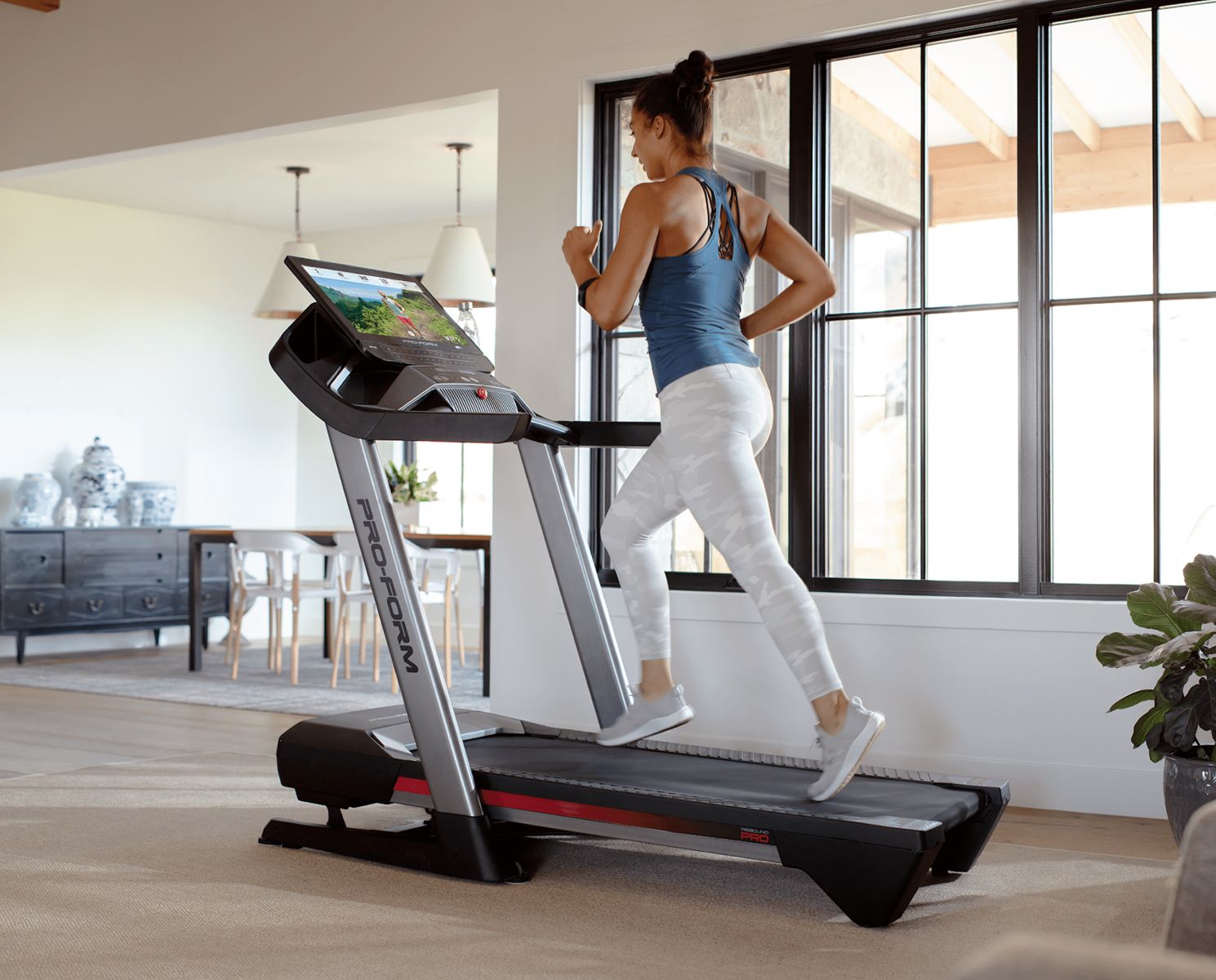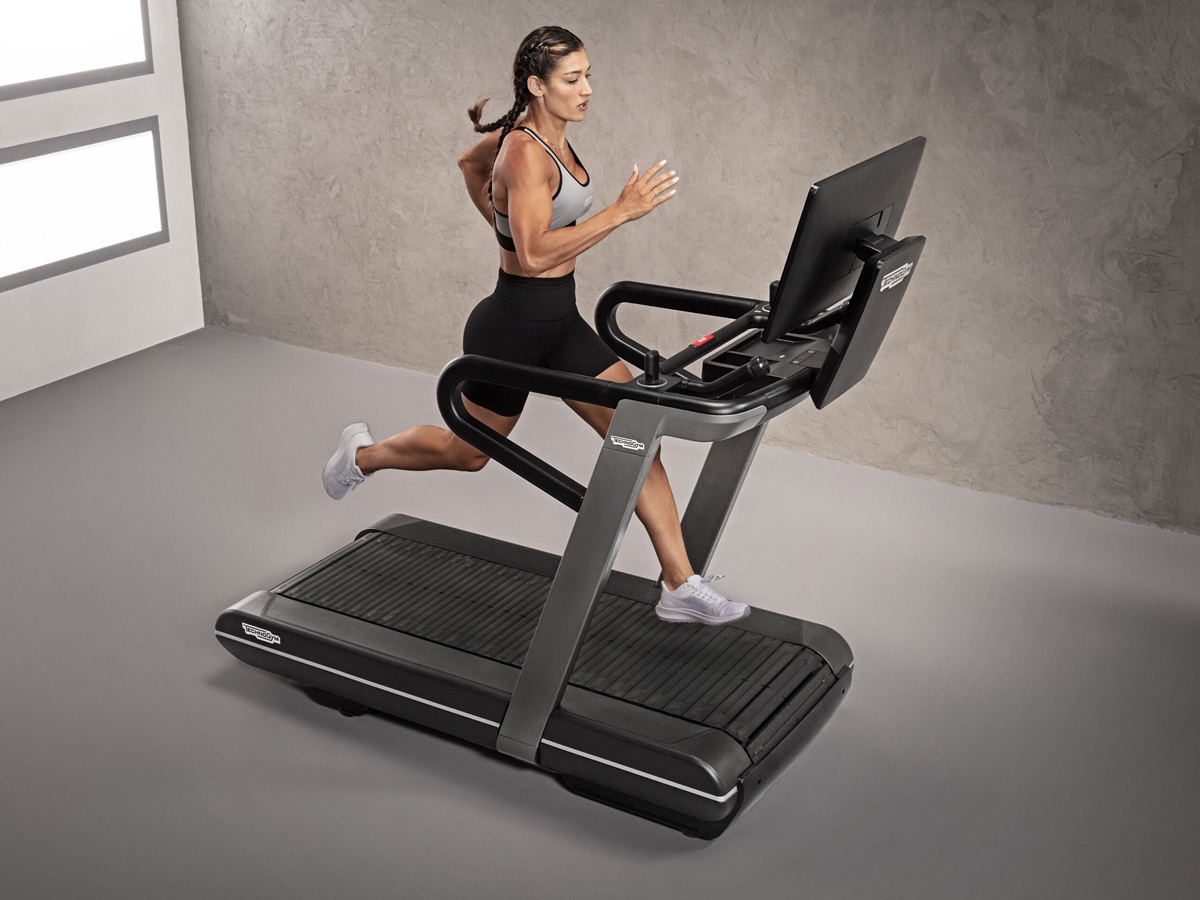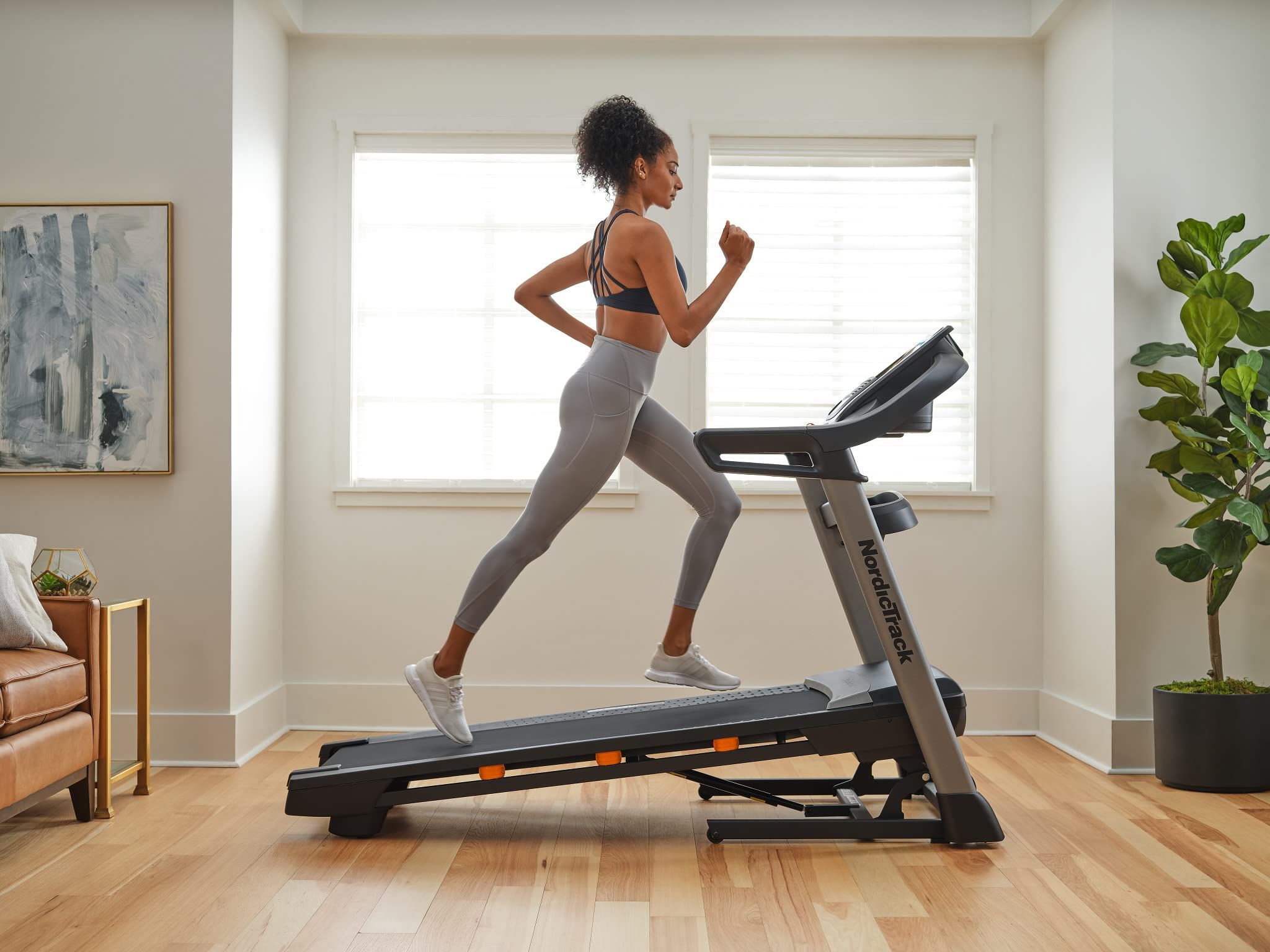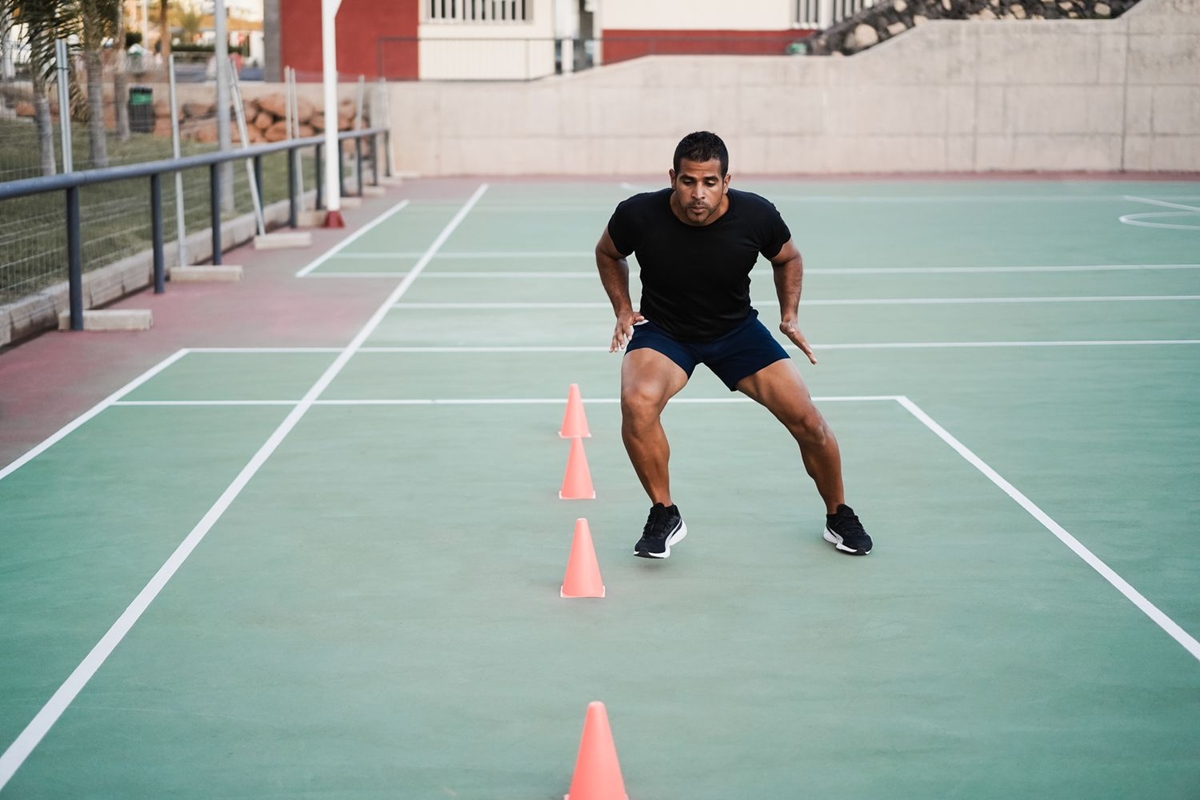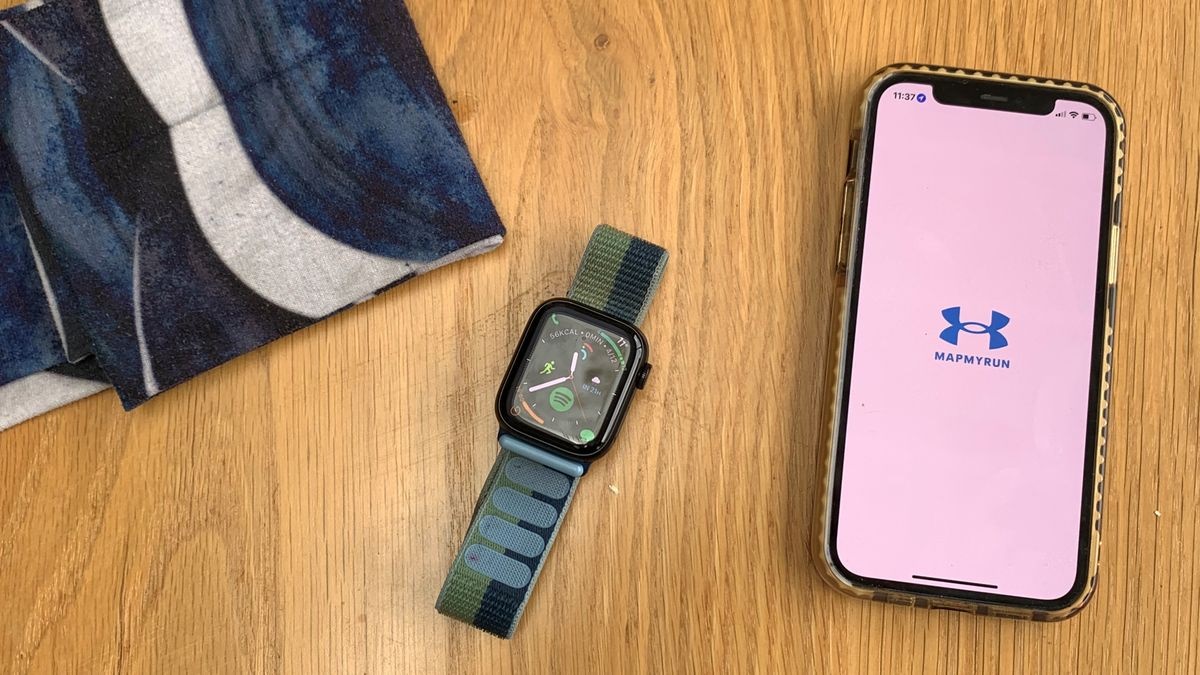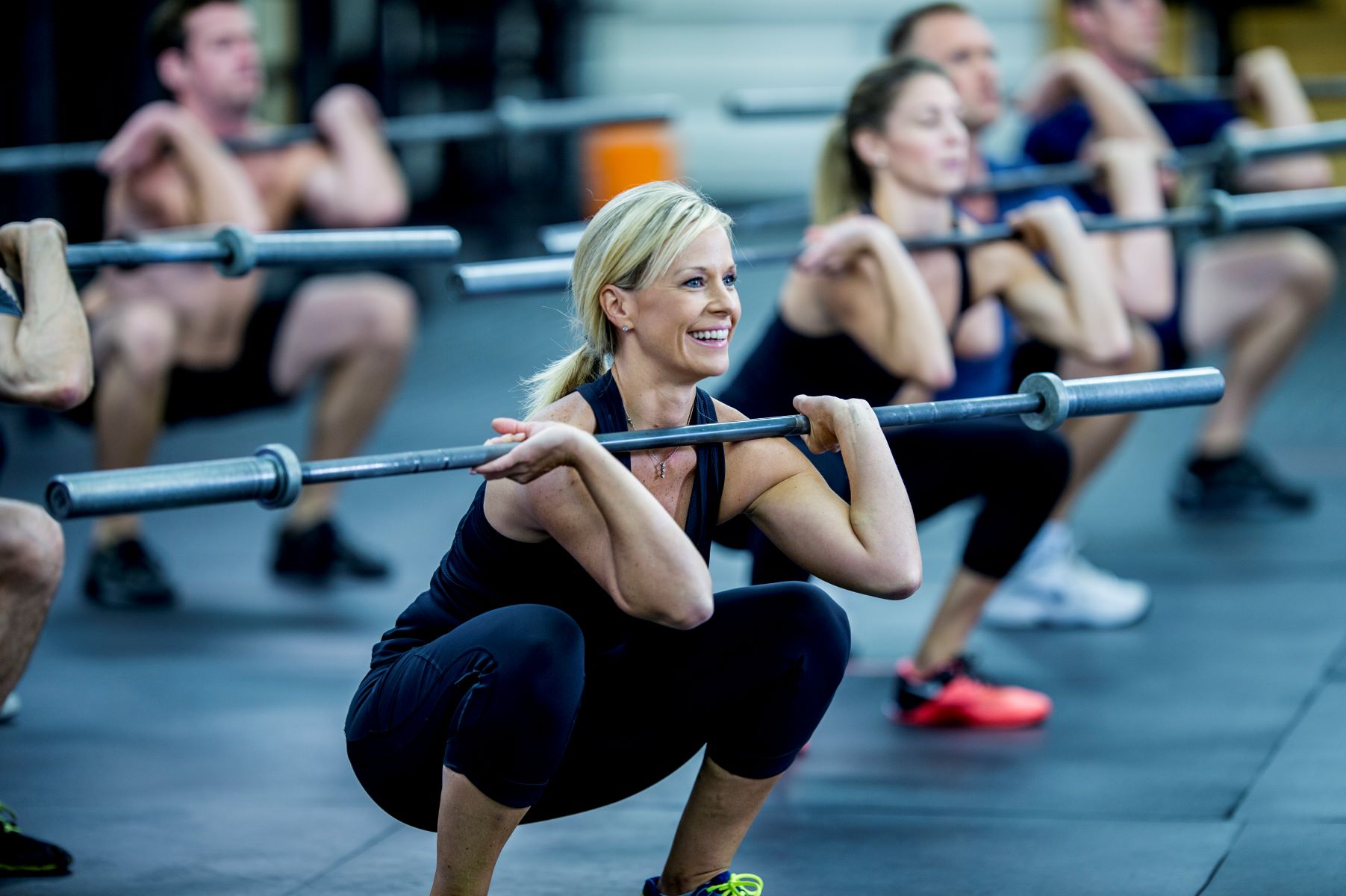Home>Misc>Featured>How Many Calories Do I Burn Doing High Intensity Interval Training
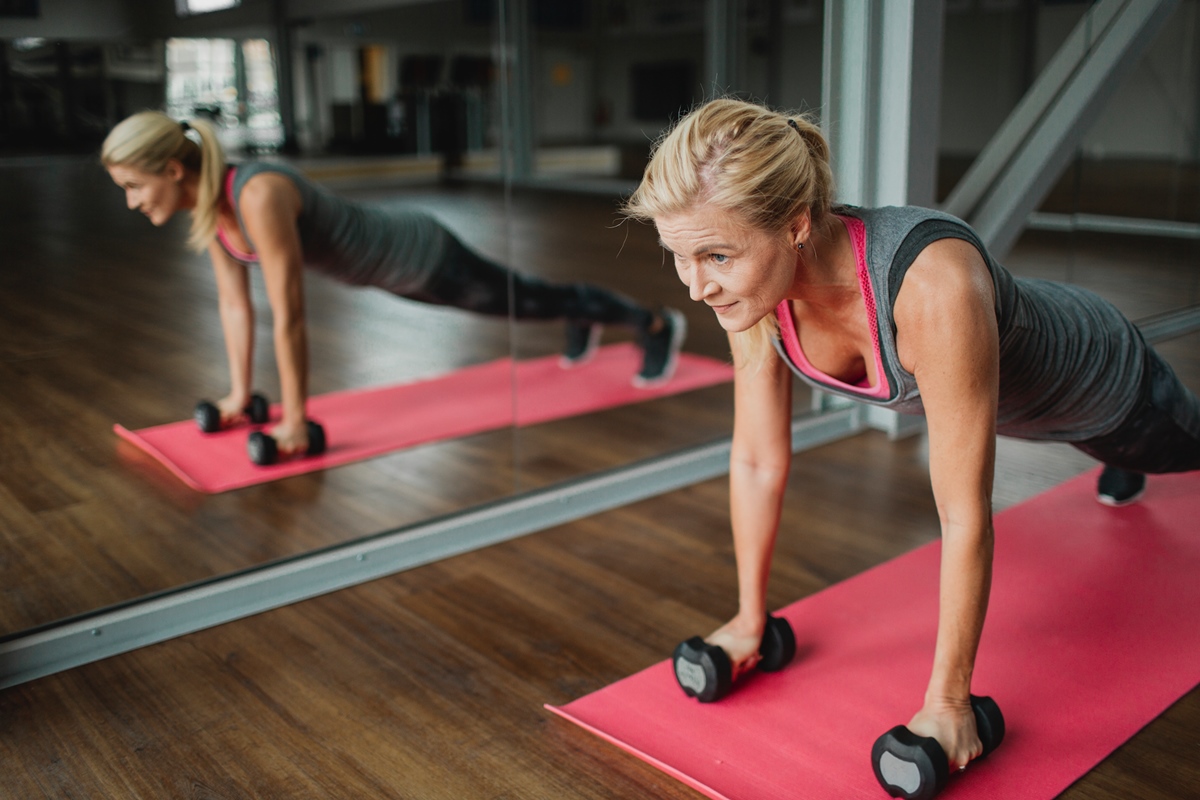

Featured
How Many Calories Do I Burn Doing High Intensity Interval Training
Modified: March 2, 2024
Learn how many calories you can burn with featured high intensity interval training workouts. Discover the benefits of this effective fitness routine.
Introduction
High Intensity Interval Training (HIIT) has gained popularity in recent years for its effectiveness in burning calories and improving fitness levels. Whether you’re looking to shed a few pounds or enhance your athletic performance, HIIT offers a time-efficient and challenging workout option. But how many calories do you actually burn during a HIIT session? In this article, we will explore the factors that affect calorie burn during HIIT, how to estimate the calories burned, and the numerous benefits of incorporating HIIT into your fitness routine.
HIIT is a form of exercise that involves short bursts of intense activity followed by periods of rest or lower intensity exercises. These high-intensity intervals push your body to its maximum effort, boosting your heart rate and stimulating fat burning. The versatility of HIIT allows you to incorporate a variety of exercises, such as sprinting, jumping jacks, burpees, or kettlebell swings, making it suitable for people with different fitness levels and preferences.
One of the key factors that make HIIT an effective calorie-burning workout is the afterburn effect, also known as excess post-exercise oxygen consumption (EPOC). Unlike steady-state cardio exercises, which primarily burn calories during the workout, HIIT continues to burn calories even after you’ve finished exercising. This is because HIIT elevates your metabolism and causes your body to use more energy to recover and restore oxygen levels. Therefore, the calorie burn from HIIT extends beyond the duration of the actual workout.
When it comes to estimating calorie burn during HIIT, it’s important to consider several factors. The duration and intensity of the intervals, your body weight and composition, gender, age, and even your fitness level all play a role in determining how many calories you burn. Individuals with higher body weight and muscle mass generally burn more calories than those with lower levels. Additionally, the intensity of the exercises performed during the high-intensity intervals also affects calorie expenditure.
In the next sections, we will delve deeper into these factors and explore different methods to estimate calorie burn during HIIT. Additionally, we will discuss the numerous benefits of HIIT, such as improved cardiovascular health, increased fat loss, enhanced endurance, and time efficiency. However, before jumping into a HIIT routine, it’s important to understand the risks and considerations associated with this type of workout, which we will also cover to ensure you have all the necessary information to make informed decisions about your fitness journey.
What is High Intensity Interval Training (HIIT)?
High Intensity Interval Training (HIIT) is a type of exercise that involves short bursts of intense activity followed by periods of rest or low-intensity exercise. It is designed to elevate your heart rate quickly and maximize calorie burn in a shorter amount of time. HIIT workouts typically last anywhere from 10 to 30 minutes, making it a time-efficient option for people with busy schedules.
During a HIIT workout, you alternate between intense exercise and brief recovery periods. The intensity of the exercise is what sets HIIT apart from other forms of cardio. It pushes your body to its limits, challenging your cardiovascular system and boosting your metabolism. The goal is to work at a high intensity for a short period and then allow your body to recover before repeating the process.
The exercises performed during a HIIT workout can vary depending on your fitness level and preferences. They can include bodyweight exercises like squats, lunges, and push-ups, as well as cardio exercises like sprinting, jumping jacks, or cycling. The key is to choose exercises that engage large muscle groups and elevate your heart rate to achieve the desired intensity.
One of the main benefits of HIIT is its ability to stimulate fat burning and improve cardiovascular fitness. The short bursts of intense exercise increase your heart rate and force your body to use stored fat as fuel. This can lead to greater fat loss and improvements in body composition over time. Additionally, the high-intensity nature of HIIT improves cardiovascular endurance and increases your anaerobic capacity.
Another advantage of HIIT is its versatility and adaptability. You can customize HIIT workouts to suit your fitness level and goals. Beginners can start with shorter work intervals and longer rest periods, gradually increasing the intensity and duration as they become more fit. Advanced individuals can incorporate more challenging exercises and shorten the rest periods to maximize the benefits of their workouts.
Incorporating HIIT into your fitness routine can offer a range of benefits. It can help you burn more calories in a shorter amount of time, making it an effective option for weight loss. It also improves overall cardiovascular health, increases muscle endurance, and can even boost your metabolism for hours after your workout, thanks to the afterburn effect.
However, it is important to note that HIIT is a high-intensity form of exercise and may not be suitable for everyone. If you have any underlying health conditions or are new to exercise, it is important to consult with a healthcare professional or a certified fitness trainer before starting a HIIT program. They can provide guidance on proper form, appropriate exercise selection, and help you tailor the intensity to your individual needs.
In the following sections, we will explore the factors that affect calorie burn during HIIT and discuss methods to estimate the number of calories burned during these workouts. Understanding these factors is crucial for optimizing your HIIT routines and achieving your fitness goals.
Factors that Affect Calorie Burn During HIIT
Calorie burn during High Intensity Interval Training (HIIT) can vary depending on several factors. Understanding these factors can help you optimize your workouts and get the most out of your calorie-burning sessions. Let’s take a closer look at the key factors that influence calorie burn during HIIT:
- Intensity of Exercise: The intensity of your HIIT workout plays a significant role in determining calorie burn. Higher intensity exercises require more energy and thus result in a higher calorie burn. Activities that engage multiple muscle groups and elevate your heart rate to a challenging level will yield greater calorie expenditure.
- Duration of Intervals: The length of your exercise intervals can also impact calorie burn. Longer intervals provide more time for your body to work and, therefore, burn more calories. However, keep in mind that longer intervals may be more challenging, so it’s essential to find a balance that suits your fitness level and goals.
- Rest and Recovery: Rest intervals are an integral part of HIIT workouts. They allow your body to recover and replenish energy between intense exercise bouts. While rest periods may not directly contribute to calorie burn, they enable you to maintain high-intensity efforts during work intervals, which ultimately increases overall calorie expenditure.
- Body Weight and Composition: Your body weight and composition also affect the number of calories burned during HIIT. Generally, individuals with higher body weight and muscle mass burn more calories due to the increased energy demand for moving and supporting their bodies. Muscle mass is metabolically active even at rest, contributing to a higher basal metabolic rate and greater calorie burn overall.
- Gender and Age: Gender and age can also influence calorie burn during HIIT. On average, men tend to have a higher lean muscle mass and basal metabolic rate, leading to a slightly higher calorie burn compared to women. Additionally, as we age, our metabolism naturally slows down, which may affect overall calorie expenditure.
- Fitness Level: Your current fitness level can impact how many calories you burn during HIIT. As you become more fit and your body adapts to high-intensity exercise, you may burn fewer calories for the same workout. To continue challenging your body and maximizing calorie burn, it’s important to progressively increase the intensity or vary the exercises in your HIIT routine.
It’s important to note that calculating the exact number of calories burned during HIIT can be challenging. Many factors, such as individual differences and variations in exercise execution, can affect the accuracy of calorie burn estimates. However, understanding these factors that influence calorie expenditure allows you to make informed decisions when designing your HIIT workouts and tracking your progress.
In the next section, we will explore different methods to estimate calorie burn during HIIT, providing you with practical tools to gauge the intensity of your workouts and monitor your fitness journey.
Estimating Calorie Burn During HIIT
While it’s difficult to measure the exact number of calories burned during High Intensity Interval Training (HIIT), there are several methods you can use to estimate calorie expenditure. These methods can help you track your progress, set personal goals, and make adjustments to your workouts as needed. Here are some practical ways to estimate calorie burn during HIIT:
Heart Rate Monitoring: One of the most common methods to estimate calorie burn during exercise is by using a heart rate monitor. Wearable devices such as fitness trackers or smartwatches can provide real-time heart rate data, allowing you to get a general estimate of the calories burned during your HIIT workout. These devices use algorithms that take into account factors like age, weight, and heart rate to calculate calorie expenditure.
Calorie Calculators: Online calorie calculators are another useful tool to estimate calories burned during exercise. These calculators typically require information such as age, weight, gender, and specific exercise details, such as duration and intensity. While they may not provide pinpoint accuracy, they can give you a rough estimate to work with.
METs (Metabolic Equivalents): METs are a measure of the energy expenditure of various activities, including exercise. The MET value represents the ratio of the rate of energy expended during the activity to the rate of energy expended at rest. By multiplying the MET value of a specific HIIT exercise by your body weight in kilograms and the duration in minutes, you can estimate the calories burned. MET charts are available online and in exercise science resources.
Perceived Exertion: Rating the perceived exertion level during your HIIT workouts using the Borg RPE (Rate of Perceived Exertion) scale can also give you a rough estimate of calorie burn. The scale ranges from 1 to 10, with 1 being very light activity and 10 being maximum exertion. By combining your perceived exertion with the duration of your workout, you can get a general idea of the intensity and, subsequently, the calories burned.
HIIT Workout Apps: There are numerous HIIT workout apps available that provide pre-programmed workouts, complete with estimated calorie burn. These apps often take into account factors such as exercise type, duration, and intensity to generate an estimate tailored to your specifics. While the accuracy can vary, they can be a convenient way to track your calorie burn during HIIT workouts.
Remember that these methods provide estimates and may not be 100% accurate. Individual differences and variations in exercise execution can influence calorie burn. However, using these estimation tools consistently can still give you a valuable reference point for monitoring your progress and making adjustments to your HIIT routine.
Next, we will explore the numerous benefits of incorporating High Intensity Interval Training into your fitness routine, which may further motivate you to include this effective workout strategy in your overall exercise plan.
Benefits of High Intensity Interval Training
High Intensity Interval Training (HIIT) offers a wide range of benefits that make it a popular and effective workout strategy. Whether you’re looking to improve your overall fitness, lose weight, or enhance athletic performance, incorporating HIIT into your routine can contribute to achieving your goals. Here are some of the key benefits of HIIT:
1. Increased Calorie Burn: One of the primary advantages of HIIT is its ability to torch calories. Due to the high-intensity nature of the exercises and the afterburn effect, HIIT workouts can continue to burn calories even after you’ve finished exercising. This makes it an efficient option for weight loss and improving body composition.
2. Improved Cardiovascular Health: HIIT is known for its cardiovascular benefits. The short bursts of intense exercise followed by rest periods help to train and strengthen your heart, increasing your cardiovascular endurance. Regular HIIT sessions can lower resting heart rate, improve blood pressure, and enhance overall cardiovascular function.
3. Increased Fat Loss: HIIT has been shown to be highly effective in reducing body fat. The intense exercise intervals create an oxygen deficit, forcing your body to tap into stored fat for energy. Over time, this can lead to significant fat loss and improvements in body composition.
4. Improved Endurance: HIIT workouts challenge your body to perform at high intensity for short bursts of time. This can lead to improved endurance, both aerobically and anaerobically. HIIT can enhance your stamina, allowing you to handle intense activities for longer durations.
5. Time Efficiency: One of the biggest advantages of HIIT is its time efficiency. Traditional cardio workouts can take longer to burn the same amount of calories as a shorter, intense HIIT session. With HIIT, you can achieve maximum results in less time, making it an ideal choice for those with busy schedules.
6. Variety and Adaptability: HIIT workouts can be easily customized and adapted to different fitness levels and preferences. You can incorporate a variety of exercises and modify the intensity and duration of intervals to suit your needs. This makes HIIT suitable for beginners and advanced individuals alike, offering a versatile and engaging workout option.
7. Metabolic Boost: HIIT workouts can rev up your metabolism, leading to an increase in calorie burn even when you’re at rest. The intense nature of HIIT stimulates the production of growth hormone and triggers physiological changes that enhance the efficiency of your metabolic system.
8. Increased Muscle Tone and Strength: HIIT is not just about burning calories and improving cardiovascular fitness. The resistance exercises incorporated into many HIIT workouts can also help build and tone muscle. This can lead to improved muscle strength, definition, and a more sculpted physique.
9. Mental and Emotional Benefits: HIIT workouts can release endorphins, known as “feel-good” hormones, that boost mood and reduce stress. The intensity and challenge of HIIT can also provide a sense of accomplishment and improved self-esteem, promoting overall mental and emotional well-being.
It’s important to note that while HIIT offers numerous benefits, it may not be suitable for everyone. Individuals with certain health conditions or physical limitations should consult with a healthcare professional or a certified fitness trainer to determine if HIIT is appropriate for them.
Now that we’ve explored the benefits of HIIT, let’s move on to discussing some of the risks and considerations associated with this type of workout.
Risks and Considerations When Doing HIIT
While High-Intensity Interval Training (HIIT) offers numerous benefits, it is essential to be aware of the potential risks and considerations associated with this type of workout. Understanding these factors will help you practice HIIT safely and effectively. Here are some key points to consider:
1. Injury Risk: Due to the intense nature of HIIT, there is an increased risk of injury if proper form and technique are not maintained. Rapid and repetitive movements can put stress on joints, muscles, and connective tissue. It’s crucial to use proper form, start with appropriate modifications if needed, and listen to your body to avoid overexertion and prevent injuries.
2. Prior Fitness Level: HIIT can be demanding and may not be suitable for beginners or individuals who are new to exercise. It is important to build a baseline fitness level before incorporating HIIT into your routine. Gradually increase the intensity as your fitness improves and consult with a certified fitness professional to ensure proper progression.
3. Underlying Health Conditions: Certain health conditions, such as heart disease, high blood pressure, or joint problems, may be contraindications for HIIT or require modifications. It’s crucial to consult with a healthcare professional or a certified fitness trainer if you have any pre-existing health conditions to determine if HIIT is appropriate for you.
4. Overtraining: HIIT workouts should be balanced with adequate rest and recovery. Overtraining can lead to physical and mental fatigue, increased injury risk, and decreased performance. Ensure you provide enough time for your body to rest and recover between HIIT sessions to optimize the benefits and prevent burnout.
5. Individual Fitness Goals: While HIIT can be beneficial for various fitness goals, it may not be the best choice for everyone. For specific goals such as strength training or muscle gain, incorporating other forms of exercise alongside or instead of HIIT may be more appropriate. Tailor your workout routine to align with your individual needs and goals.
6. Impact on Joint Health: The high-impact nature of certain HIIT exercises, such as jumping or plyometric movements, can place stress on joints, especially the knees and ankles. Individuals with joint issues or previous injuries should be cautious when performing these exercises and consider modifying or substituting them with lower-impact alternatives.
7. Listen to Your Body: It’s important to listen to your body during HIIT workouts. Pay attention to any pain, discomfort, or excessive fatigue. Push yourself to exertion, but not to the point of injury. If something doesn’t feel right, adjust the intensity or modify the exercise. Your body knows its limits, and it’s essential to respect and honor them.
8. Proper Warm-up and Cool-down: Before starting a HIIT session, warm-up exercises are crucial to prepare your body for the intense workout ahead. Additionally, incorporating a cool-down routine after your HIIT session can help your body gradually return to a resting state and decrease post-workout muscle soreness.
By understanding and considering these risks and factors, you can make informed decisions about incorporating HIIT into your fitness routine. Remember to prioritize safety, listen to your body, and seek guidance from qualified professionals if needed. With proper preparation and technique, HIIT can be a highly effective and enjoyable workout strategy.
Now that we’ve explored the risks and considerations, let’s conclude the article by summarizing the key points covered and reiterating the benefits of incorporating HIIT into your fitness routine.
Conclusion
High Intensity Interval Training (HIIT) is a powerful and effective workout strategy that offers numerous benefits for individuals looking to burn calories, improve fitness levels, and achieve their fitness goals. By incorporating short bursts of intense exercise followed by periods of rest or lower intensity exercise, HIIT can maximize calorie burn, improve cardiovascular health, increase endurance, and provide time-efficient workouts.
Factors such as the intensity and duration of intervals, rest and recovery periods, body weight and composition, gender, age, and fitness level can all influence calorie burn during HIIT. While estimating the exact number of calories burned during HIIT can be challenging, tools such as heart rate monitors, calorie calculators, METs, and perceived exertion scales can provide valuable estimations.
It’s important to consider the risks and considerations associated with HIIT, including potential injury risks, the need for a baseline fitness level, precautions for individuals with underlying health conditions, the risk of overtraining, impact on joint health, and the importance of listening to your body. By practicing HIIT safely, gradually increasing intensity, and prioritizing rest and recovery, you can minimize the risks and enjoy the benefits of this workout style.
In conclusion, incorporating HIIT into your fitness routine can be a game-changer. With its ability to burn calories, improve cardiovascular health, increase endurance, and offer time-efficient workouts, HIIT provides a versatile and challenging option for individuals of all fitness levels. By understanding the factors that affect calorie burn, estimating calorie expenditure, and considering the associated risks, you can design effective HIIT workouts that help you achieve your fitness goals, improve overall health, and enhance your overall well-being.
So, lace up your workout shoes, find a HIIT routine that suits you, and get ready to experience the incredible benefits that High Intensity Interval Training has to offer!
